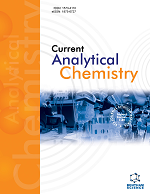
Full text loading...
We use cookies to track usage and preferences.I Understand

Construction and Demolition Waste (CDW) constitutes a major portion of solid waste and presents a significant environmental challenge. This study aims to evaluate the transformation of CDW into a Recycled Aggregate (RA) as a sustainable strategy to mitigate environmental pollution.
The research assesses the mechanical properties and economic benefits of RA concrete, which is made by substituting natural aggregate with RA.
Results indicate that RA has lower density, higher water absorption, and reduced crushing strength compared to natural aggregates. However, RA concrete achieves optimal strength with a 40% replacement rate, marking a critical threshold for material efficiency. An economic analysis confirms the financial viability of using recycled concrete, indicating a favorable investment return. Advances in the research and application of RA suggest its expanding role in engineering applications.
A lifecycle assessment of carbon emissions from concrete production to site transportation was conducted. It revealed that the primary source of emissions in recycled concrete is the raw materials, accounting for about 85% of total emissions. This finding underscores the need to optimize raw material usage to enhance the sustainability of recycled concrete.

Article metrics loading...

Full text loading...
References


Data & Media loading...